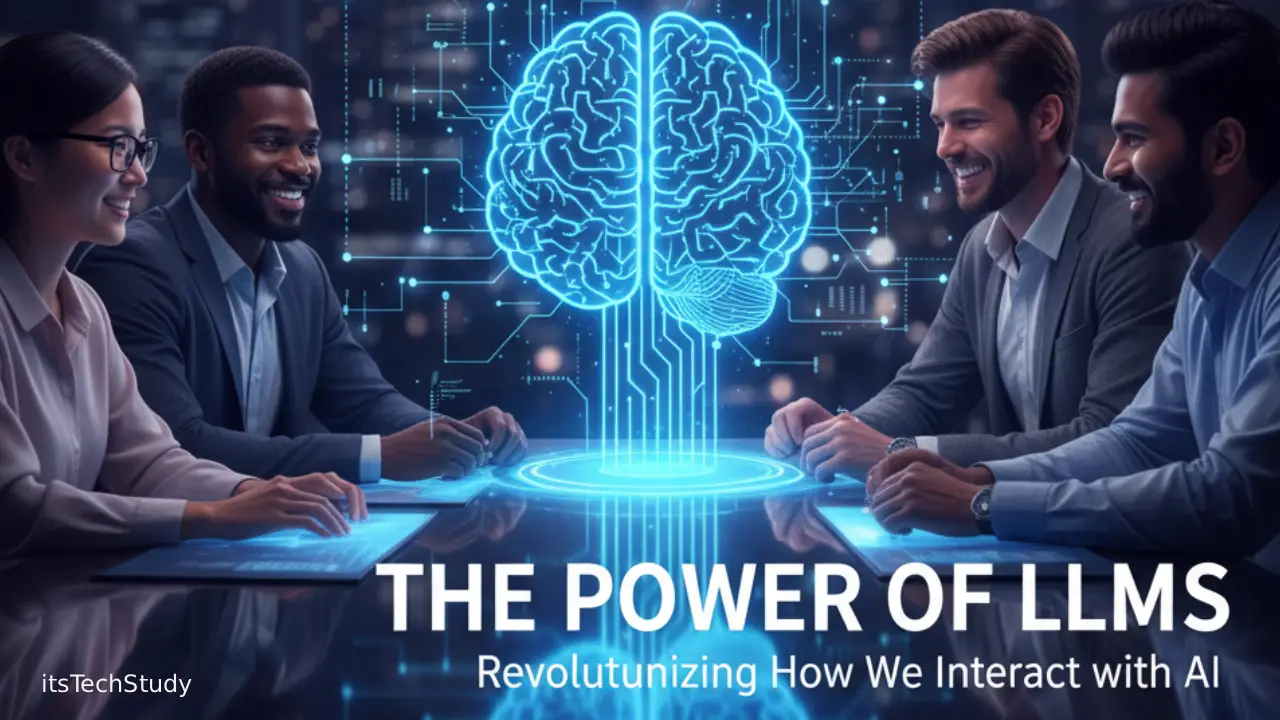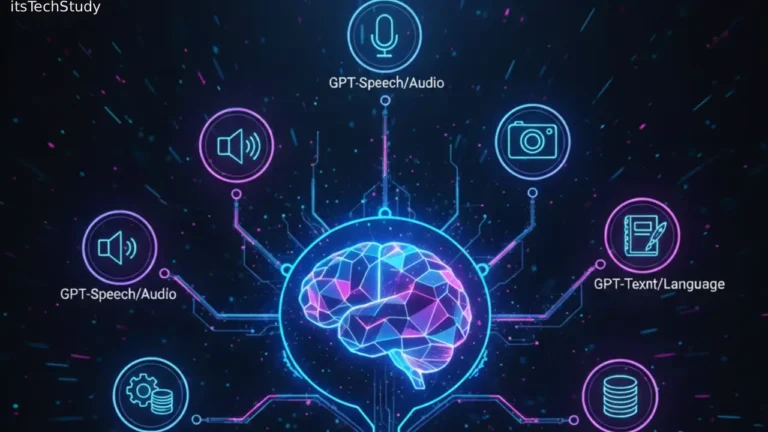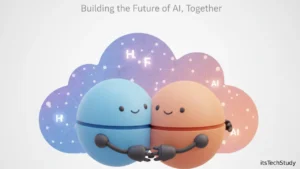Introduction: The AI Revolution Enters a Smarter Era
In the last few years, artificial intelligence has transitioned from an emerging technology to an indispensable tool powering almost every industry. From automating customer support to generating human-like content and analyzing massive datasets – AI is reshaping how businesses operate. At the heart of this transformation lies one of the most powerful innovations in modern computing: Large Language Models (LLMs).
In 2025, the use of large language models has become even more widespread. With open-source frameworks like Hugging Face, OpenAI’s GPT series, Anthropic’s Claude, and Google’s Gemini models pushing the limits, developers and organizations are racing to leverage LLMs to create smarter, more context-aware AI applications.
But the big question remains – how exactly can you use large language models to make AI applications smarter, faster, and more efficient in 2025?
This comprehensive guide dives deep into the mechanics, methods, benefits, challenges, and real-world strategies for harnessing LLMs effectively. Whether you’re a developer, entrepreneur, or tech enthusiast, this article will help you understand how to integrate and optimize these models to stay ahead of the AI curve.
What Are Large Language Models (LLMs)?
Large Language Models are a subset of artificial intelligence systems designed to understand, generate, and manipulate human language using machine learning – specifically, deep learning architectures like transformers.
These models are trained on vast amounts of text data, learning grammar, semantics, facts, reasoning patterns, and even nuances of tone or context.
For example:
- GPT-4 or GPT-5 can write essays, summarize research, or generate software code.
- Claude focuses on reasoning and safety in natural conversation.
- Gemini integrates multimodal understanding – combining text, images, and voice.
Essentially, LLMs act as the brains behind modern AI, enabling machines to understand human intent and respond intelligently.
Why 2025 Is a Defining Year for LLMs
2025 marks a turning point in AI development. The field is rapidly evolving beyond text generation — towards contextual understanding, cross-domain learning, and multimodal intelligence.
Here are a few defining trends shaping the use of LLMs this year:
- Multimodal AI: Integration of text, image, video, and audio inputs into unified models.
- Edge and On-Device AI: Running smaller LLMs locally for privacy and faster performance.
- Custom Fine-Tuning: Businesses training domain-specific models for specialized tasks.
- Ethical AI Development: Stricter focus on transparency, safety, and responsible data use.
- AI-as-a-Service (AIaaS): Cloud providers offering easy access to LLM APIs for startups and enterprises.
These trends make it crucial for professionals to understand how to effectively deploy and optimize large language models for practical, real-world AI solutions.
How Large Language Models Work (Simplified)
To understand how to use LLMs, you need a basic grasp of their internal mechanics.
At the core lies the Transformer architecture, introduced by Google in 2017. Transformers enable LLMs to handle vast text sequences using self-attention, allowing them to learn relationships between words and contexts efficiently.
Simplified Workflow:
- Data Collection: The model is trained on massive text datasets (books, articles, code).
- Tokenization: Text is broken into smaller chunks or “tokens” for processing.
- Training Phase: Using billions of parameters, the model learns word associations.
- Fine-Tuning: Adjustments are made for specific industries or applications.
- Deployment: APIs or custom applications utilize the trained model for real-world tasks.
How To Use Large Language Models for Smarter AI Applications
Now let’s explore the step-by-step process of leveraging LLMs to build intelligent and efficient AI-powered solutions in 2025.
1. Identify the Right Use Case
The first step is to decide what problem you’re solving. LLMs are versatile but not universal. Common smart AI use cases include:
- Conversational AI: Chatbots, virtual assistants, and customer support systems.
- Content Generation: Writing, summarizing, or translating text automatically.
- Data Analysis: Extracting insights from structured and unstructured data.
- Automation: Streamlining repetitive workflows using intelligent text-based commands.
- Code Generation: Tools like GitHub Copilot assist developers using LLMs trained on code.
- Education: Personalized learning systems that adapt to user needs.
Choosing the right use case ensures that your LLM deployment delivers tangible value.
2. Choose the Right LLM Platform
Different LLMs and providers offer unique strengths.
| Platform | Key Features | Best For |
|---|---|---|
| OpenAI GPT-5 | Natural conversation, creative text, coding | Content, chatbots, automation |
| Anthropic Claude 3 | Context safety, ethical reasoning | Business and legal analysis |
| Google Gemini | Multimodal intelligence | Search, multimedia, data-heavy tasks |
| LLaMA 3 (Meta) | Open-source, customizable | Developers & researchers |
| Mistral AI | Lightweight, efficient models | Edge devices, mobile apps |
Each platform comes with APIs or SDKs for seamless integration into apps or enterprise systems.
3. Fine-Tune or Customize the Model
Pre-trained LLMs are general-purpose. To make them smarter for your application:
- Fine-tune the model on domain-specific datasets (e.g., healthcare, finance).
- Prompt engineering: Crafting effective prompts to guide model behavior.
- Use retrieval-augmented generation (RAG): Combine LLMs with real-time data retrieval for accuracy.
- Implement guardrails: Ensure safety, factual correctness, and compliance.
Example:
A medical AI assistant could be fine-tuned on verified medical literature to improve reliability and reduce hallucinations.
4. Integrate LLMs Into Your AI Workflow
Integration depends on your application type:
- Web & Mobile Apps: Use APIs from OpenAI, Anthropic, or Hugging Face.
- Enterprise Solutions: Deploy via cloud AI platforms like AWS Bedrock, Azure OpenAI, or Vertex AI.
- Custom Systems: Use frameworks like LangChain or LlamaIndex for building LLM-powered pipelines.
A simple integration architecture:
User -> Front-End App -> API Call -> LLM Response -> Output Display
5. Optimize for Performance and Cost
LLMs can be resource-intensive. Optimize your usage by:
- Using smaller distilled models for routine tasks.
- Implementing caching mechanisms for repeated queries.
- Batch processing to reduce API costs.
- Monitoring latency and token usage through analytics tools.
Smarter optimization ensures balance between efficiency and expense.
6. Ensure Ethical and Responsible AI Use
In 2025, ethical AI is not optional.
Ensure compliance by:
- Avoiding biased or sensitive data.
- Monitoring outputs for misinformation.
- Following GDPR and global AI regulations.
- Providing transparency about AI-generated content.
Responsible AI builds trust and long-term user engagement.
Pros and Cons of Using Large Language Models
| Pros | Cons |
|---|---|
| Generates human-like text quickly | High computational costs |
| Enables automation across industries | Possible inaccuracies or “hallucinations” |
| Customizable and scalable | Requires large datasets for training |
| Supports multilingual and multimodal inputs | Ethical and privacy concerns |
| Reduces workload and improves efficiency | Can be misused without proper guardrails |
Key Benefits of Smarter AI Applications
- Improved Decision-Making: LLMs analyze unstructured data intelligently.
- Personalized User Experience: Context-aware systems that adapt to users.
- Scalable Solutions: Cloud APIs make deployment faster.
- Cross-Industry Use: From marketing to medicine, applications are limitless.
These benefits make LLM-powered systems an essential component of AI innovation in 2025.
Common Mistakes to Avoid When Using LLMs
- Ignoring Fine-Tuning: Using generic models without customization leads to mediocre results.
- Overlooking Data Quality: Poor datasets cause inaccurate or biased outputs.
- Neglecting Security: Sensitive data must be anonymized before feeding into models.
- Relying Fully on AI: Always include human oversight in decision-making loops.
- Skipping Testing: Continuous testing ensures accuracy and consistency.
Future of LLMs: What’s Coming Beyond 2025
Looking ahead, large language models are expected to evolve into multimodal general intelligence systems – capable of understanding images, videos, and even emotions in real time.
We’ll also see:
- Quantum-enhanced AI training for faster model learning.
- Personal AI agents trained on individual user data for daily assistance.
- Hybrid AI ecosystems combining LLMs with symbolic reasoning for accuracy.
In short, we are heading towards AI that truly thinks, not just predicts.
Conclusion: Building Smarter AI for the Future
Large language models have changed the landscape of artificial intelligence forever. In 2025, their power extends beyond simple text generation – they enable contextual understanding, decision-making, and cross-domain reasoning.
By learning how to choose, fine-tune, integrate, and ethically deploy LLMs, you can build smarter AI applications that drive innovation and deliver real-world value.
The future of AI isn’t just about automation – it’s about creating systems that learn, adapt, and collaborate intelligently with humans.
Now is the perfect time to start building that smarter AI future.
FAQs: Understanding and Using LLMs Effectively
Q1: What is the difference between a language model and a large language model?
Ans: A standard language model handles smaller datasets, while a large language model (LLM) uses billions of parameters and massive text data, enabling deeper understanding and more fluent generation.
Q2: Can I train my own large language model?
Ans: Yes, but it requires extensive data, compute resources, and technical expertise. Most developers prefer fine-tuning pre-trained models instead of building from scratch.
Q3: Are LLMs safe to use in production applications?
Ans: Yes, if used responsibly. Implement guardrails, data filtering, and human oversight to avoid errors or biased outputs.
Q4: How can businesses benefit from LLMs?
Ans: Businesses can use LLMs for customer service automation, marketing content, research analysis, and operational efficiency — reducing manual effort while improving accuracy.
Q5: What tools are best for working with LLMs?
Ans: Popular tools include LangChain, Hugging Face Transformers, OpenAI API, and LlamaIndex, which simplify integration and model customization.
Q6: How do I ensure my LLM-powered app meets privacy standards?
Ans: Encrypt user data, anonymize sensitive information, and comply with global standards like GDPR and ISO/IEC 27001.












No Comments Yet
Be the first to share your thoughts.
Leave a Comment